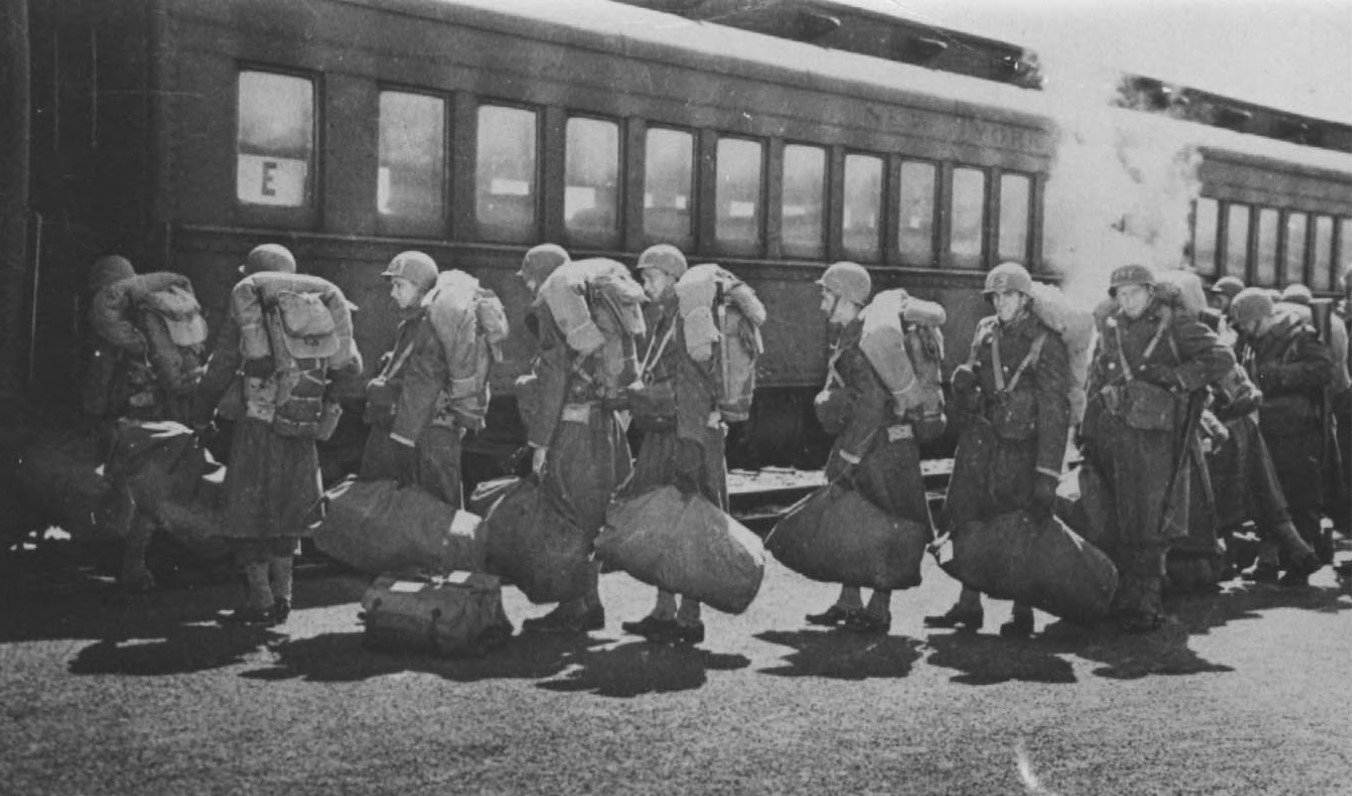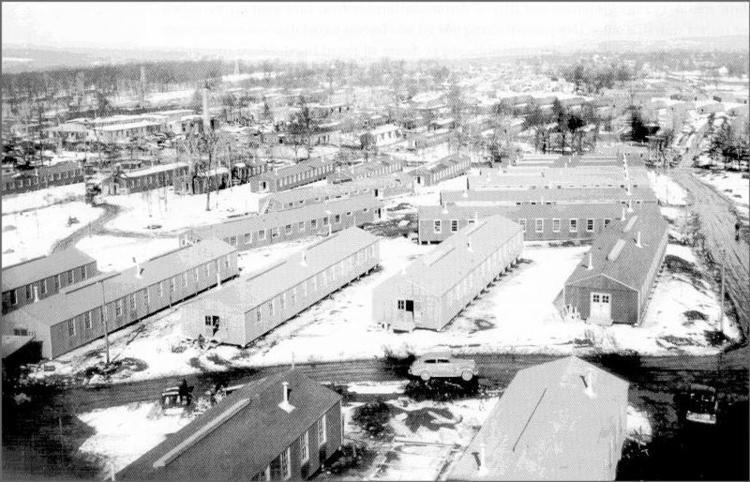
Camp Shanks
Originally commissioned in September 1943 and constructed on the townsite of Orangeburg, NY, Camp Shanks opened in January 1943 as an embarkation center. Camp Shanks was the "jumping-off" place for troops headed overseas to fight in World War II, and it had one purpose: to process units for embarkation as quickly as possible. Camp Shanks was affectionately nicknamed “Last Stop, U.S.A.” because once soldiers left from this camp, their next stop would be in one of the theaters of war. Due to the nature and purpose of Camp Shanks, the camp processed and handled tremendous numbers of men and massive amounts of equipment. Camp Shanks processed nearly 1,500,000 men and women headed overseas throughout the war. Nearly 75% of those who participated in the D-Day invasion of Normandy left the United States from Camp Shanks. Before being shipped overseas, soldiers completed their final medical physicals, received all of the gear that a G.I. would need in combat that had not yet been issued, and took care of any other administrative tasks such as completing a will, a grim task indeed for so many men who were still only teenagers or in their early twenties. The length of each unit’s stay at Camp Shanks ultimately depended on when the ships arrived in the nearby ports, but for most soldiers was less than two weeks. In April 1945, the camp also began serving as a P.O.W. camp, which processed prisoners of war on the return to their home countries. After this processing ended, the camp was briefly converted to Shanks Village, a community where soldiers lived with their families while attending college in New York City using their G.I. Bill. In 1954, the land was returned to civilian control.
The men of the 103rd Infantry Division arrived at Camp Shanks, New York on September 28, 1944. Their time at Camp Shanks marked the height of deployment from the camp, with over 78,000 troops arriving in the camp and nearly 86,000 troop departing the camp during the month of October 1944. One thing was for sure, Camp Shanks was not like Camp Claiborne, nor was it anything like Camp Howze. The camp was located just a few miles south of the U.S. Military Academy on the banks of the Hudson River, just northwest of New York City, NY. Passes into town were nothing like the experiences of the soldiers visiting towns in Louisiana and Texas. The Cactusmen now had access to the Big Apple: New York City. Life at Camp Shanks was a welcome treat after the months of constant training and field exercises, although the men of the division understood that this was the last stop before leaving the United States for what might be the last time. One aspect of life at Camp Shanks that the soldiers who passed through remember most fondly was the delicious food. Many figured those at Camp Shanks knew that the food would soon be only a dream for those soldiers heading for the front. The food at Camp Shanks was unbelievable; there were long steam tables laden with fresh fruits, green vegetables, and great salads. The soldiers could eat all they wanted for breakfast with the K.P.s shouting, "just say when!" and pile the trays with food until the G.I. hollered, "when!"
Suddenly, the curiosity level of the Cactusmen peaked, and they paid close attention to those orientation films and lectures. Soon, the simulated combat scenarios and training would be exchanged for the real experiences and horrors of war. They asked and answered questions like: "What would you do if the enemy captures you?" "What could you say when the enemy questions you after your capture?" "How do you load the ships?" "How do you use lifeboats, lifejackets, and lifebelts?" "How do you climb up the side of the ships using rope ladders?"
On the evening of October 4th, 1944 the word began to filter among the ranks: "the ships are here!" Twelve hours before they left Camp Shanks, the men of the 103rd Infantry Division were ordered to remove all identification from uniforms for security reasons and their helmets were chalked with a letter and a number, indicating the proper marching order from the camp to the train and which railroad car to ride in. They would ship out the next morning.




For more information about Camp Shanks, see:
Camp Shanks World War II Museum
“Camp Shanks: Last Stop U.S.A.” at HistoryNet
“Camp Shanks” at Wikipedia
Photo credits:
Top image: Unknown photographer, “Troops departing from Camp Shanks via Train,” Orangetown Historical Museum & Archives; orangetownmuseum.com
Gallery, top row left: Unknown photographer, “Camp Shanks or Shanks Village, Overview of A-3 Barracks Area” Original U.S. Army Signal Corps photo. 103rd Infantry Veterans Association, University of Southern Mississippi.
Gallery. top row right: Unknown photographer, “Camp Shanks directional sign, 1945.” Original U.S. Army Signal Corps photo. Orangetown Historical Museum & Archives; orangetownmuseum.com
Gallery, bottom row left: Unknown photographer, “Soldiers Ready to Ship Out of Camp Shanks,” The Nyack [NY] Library.
Gallery, bottom row right: Unknown photographer, “Soldiers Lining Up to Disembark at Piermont Pier, Camp Shanks, New York,” Piermont Historical Society, New York; http://www.piermonthistorysociety.org/world-war-two.html